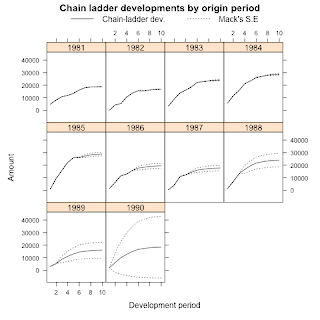The National Journal, a non-partisan Washington based news magazine, published the story as if it was news.
Poll: Majority of Voters Want Medicare Funding Left Untouched The first paragraph noted that 83 percent of the respondents oppose cuts to Medicare and higher beneficiary copayments. 70 percent believe that the government should be more active in fighting waste, fraud, and abuse in both Medicare and Medicaid. It wasn’t until the second paragraph that we got the rest of the story.
The poll was commissioned by
Fight Fraud First. One of the members of the collection of groups that created Fight Fraud First just happens to be
AARP, the same organization that sponsors an endless series of television spots scaring and/or rallying senior citizens.
So we have three questions.
- Is it at all surprising that 83% of the population (assuming that the poll wasn’t weighted with seniors!) want as much money and benefits as they can get with little or no charges?
- Would you expect a poll conducted by an organization named Fight Fraud First to release the results of a poll that didn’t strongly endorse the concept of fighting fraud first?
- Was this news?
Since the first two questions are obvious, allow me to answer the third.
NO!We want painless solutions to all of our problems and we are at least 83% convinced that someone else should pay for the debts we have all created. I’m not sure if this mindset can be traced to the concept of paying for two wars by shopping or if it is simply more prevalent in today’s society, but it is everywhere we look.
I was in New York City a few weeks ago and had a chance to visit the Occupy Wall Street. Yes, it did remind me of the anti-war protests of the late sixties and early seventies. But at the risk of ticking off most of my readers, I have to tell you that there is little difference between the
Occupy Wall Street crowd, a
Tea Party rally, and a group of Libyan soldiers firing their rifles straight up into the air with little regard to where the bullets will land. Within each group is a small core that understands and can discuss the issues. There is also a larger faction that has a propagandist’s view of the group’s concerns, but is totally committed for the moment. The rest, the vast majority, have nothing better to do and no place better to be.
The links in the above paragraph will provide you with plenty of laughs whether you are on the Right or the Left.
In a perfect world, in the ideal democracy, those masses gathering at Tea Party rallies and camping out at Occupy sites around the country would be engaged in intellectual policy debates. These citizens would be working hard to find solutions to our country’s economic woes.
That is not happening.
What we have, instead, are people desperately attempting to assert their relevance. It appears to be very easy to confuse one’s self-interest with what is allegedly in the U.S.’s best interest. And this leads us to the current health care debate.
The
Patient Protection and Affordable Care Act (PPACA) attempts to change who pays for health care, but does nothing to control the cost of care. Changing the payer doesn’t solve our problem of
spiraling health care costs.
The current financial debacle has forced some in Congress to start thinking about reigning in costs. This has resulted in the special interest groups to snap into action.
- The American Hospital Association has a woman staring into the camera, and our souls, decrying any cuts that could endanger her father’s health.
- AARP’s commercial supposedly speaks for 50 million seniors who are united to oppose any cuts and will vote, as one, against anyone who dares oppose them.
- The A.M.A. (American Medical Association) is spending big bucks to remind you that doctors are on your side.
Luckily, as Ohio residents we have been spared the finger pointing and shouting of the Republican presidential primary ads. Better Iowa than us.
The next year is very important. Will the PPACA survive? My guess is still Yes. The rules and regulations are being written and imposed now. It will be very difficult to simply reverse all of this, even if anyone wanted to, in January 2013. What you need to watch, what you need to ask are what cost containment measures, if any, are being implemented?
There is a lot of noise out there. People are marching to retain the life they think they have. Or they might be marching to claim their share of the American largesse that has eluded them. Many of these same people will soon be whipped into action to save their local hospitals or to protest a cut in nurses’ wages. The one constant throughout all of this will be the absence of personal sacrifice.
Ask people to pay more? That might create
an angry mob.
DAVE
www.bcandb.com








